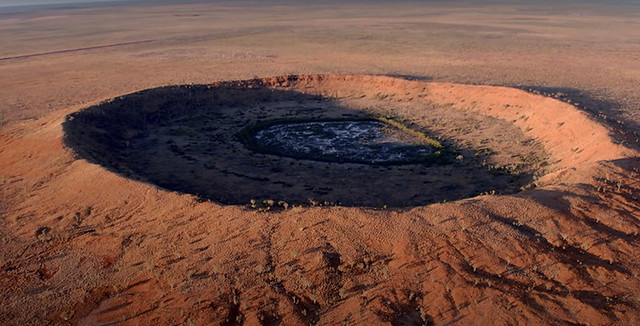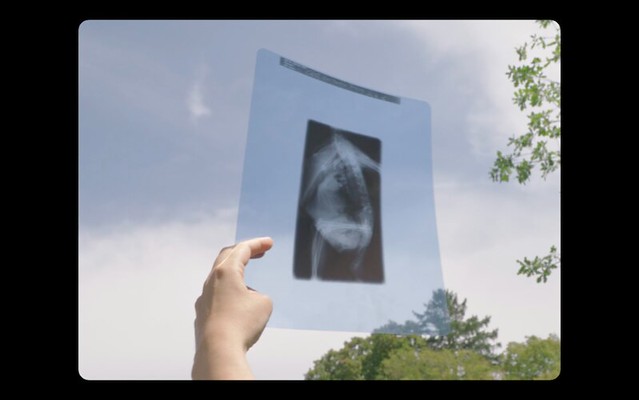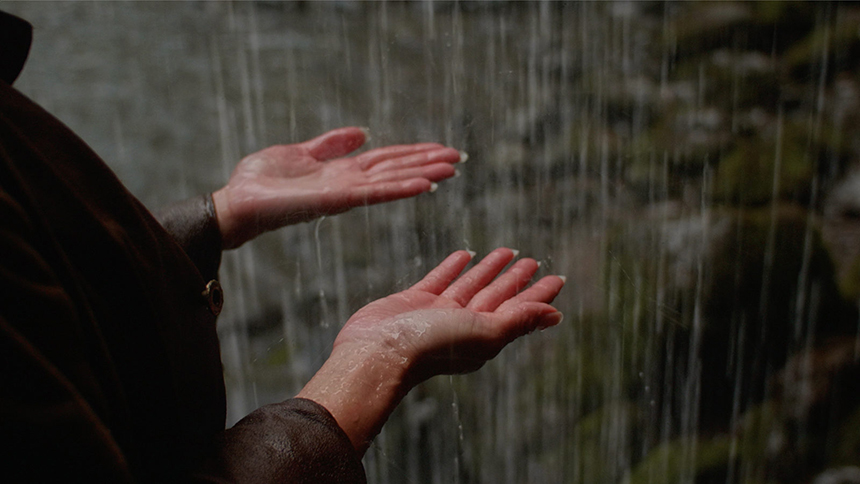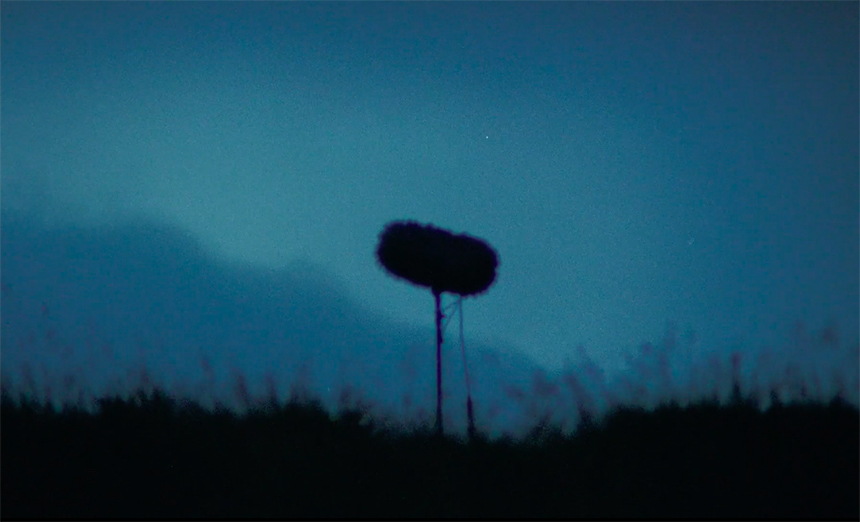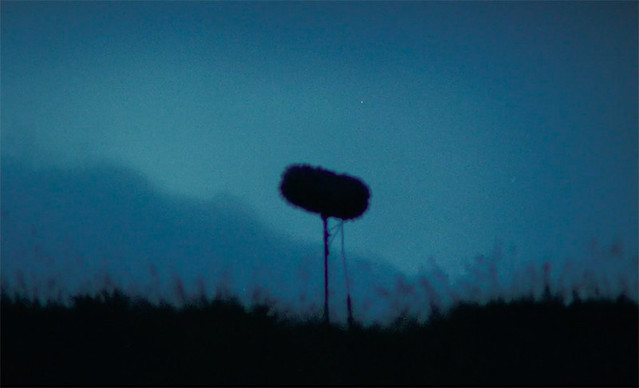
Werner Herzog. What more can be said about the man, the original Barbarian, the legend? Meeting Herzog as a film journalist has always been an elusive dream of mine. And I never thought I would get a chance. But at seventy eight, Herzog has been as prolific as ever. This year alone, he is seeing the release of three of his films - Nomad: In the Footsteps of Bruce Chatwin, Family Romance, LLC and now Fireball: Visitors from Darker Worlds. This gave me a little bit of hope that he'd be hitting the press junket. And when the interview opportunity finally came along, albeit through a zoom session because of the world wide pandemic, I couldn't pass up the opportunity to talk with one of my true heroes of cinema.
And I am happy to report that Fireball, his new film co-directed by volcanologist/geologist Clive Oppenheimer (with whom Herzog collaborated in Into the Inferno previously) , is a thing of a beauty. It encapsulates the very essence of the legendary filmmaker has been doing all his career - trying to awaken the sense of wonder, sense of awe, sense of curiosity in us audiences.
I had to tell Herzog off the bat that I was his biggest fan and that I would not waste my precious twenty minutes with him on being a fanboy and only ask him about the film at hand. To my surprise, besides being very Herzogian, he turns out to be very warm and funny and full of laughs. And Oppenheimer, as a wry scientist, his worthy partner in crime. I really hope they had as much fun as I did talking with them.
Oh and do not miss this film. Fireball is certainly one of the best films I've seen this year.
Fireball: Visitors from Darker Worlds opens virtually on Apple TV on 11/13.
First of all, I really really loved this film. It’s certainly one of the best I’ve seen this year. It’s beautiful and philosophical and everything I want to see in films. It’s tragic that I can’t see it on the big screen in theaters, like in normal times.
So you met each other while filming The Encounters at the End of the World. Then you did Into the Inferno together and now Fireball. How did this project come about? I know that you, Clive, initiated the project.
Herzog: First of all, we were lucky that we ran into each other on top of the volcano, it was 2500 feet altitude and 30 degrees below zero. We were immediately struck with each other’s presence and we stayed in touch saying we should make a film together one day. Ten years later, Clive came with Into the inferno, about volcanoes and then he called me again and said we should do another thing about meteorites. It took me five seconds and it was clear.
Oppenheimer: First thank you for your kind words on the film and I also agree I also miss not seeing it in theaters. I miss traveling with the film to the festivals and to be with the audiences and seeing it. I hope that it will be possible that there will be screenings in the future.
In its inception it was a piece of serendipity. It was spontaneous recognition that it would be a great topic to dig into: it was on a trip to South Korea where I met the scientists who go annually to Antarctica to hunt for meteorites.
Right.
They’ve already got a thousand of those. But they keep going there to find things they never found before. They showed us some of the specimen, which were beautifully curated in the laboratory with a kind of great visual aesthetic and in a scientific veneration, these examples displayed. It was for me an echo of veneration of meteorites in cultures around the world. One of the oldest falls, recorded falls is in Nogata, Japan. Now the stone in a shinto temple. So in Nogata, every five years, it goes on a procession through the streets. The black stone of Kabaa in the grand mosque… So clearly this is a topic like volcanoes that completely entangles the nature and culture… so we were off on another adventure.
Herzog: I am a storyteller so I can tell if it’s something big. And you know it instantly, like Grizzly Man, you know it instantly, this is so big, you gotta do it.
Yep. As you know, in this country, at least the last four years, there has been an anti-science sentiment that was pretty strong. And I know that—
Herzog: It’s just not the last four years. It’s not the administration…. It’s the American culture. It has to do with that frontier spirit. You are out there and you are against the frontiers and you are against the enemies out there and you have a rifle and your fist. So it’s culturally engrained which is not set by an administration alone. Now it just becomes more visible.
Oppenheimer: If anyone hasn’t read Naomi Oreskes’s book Merchants of Doubt, I mean, this is where you really begin to understand what it’s about. I’ve been at climate change conferences and I’ve seen exactly this pitting one so-called expert against another and sowing confusion in a very orchestrated way. So that’s the way it is.
The thing that struck me most the about your films is that over the years, Werner made all these films featuring scientists and science. I am wondering what the correlation of your filmmaking and science and how you found this affinity between the two.
Herzog: Very simple. I wouldn’t have made a single film without a sense of awe. I wouldn’t have made a single story without sense of deep excitement. That’s culture – a collective agitation of mind. It’s the core of what culture is. A cow in the field doesn’t have that. And we have it.
Yes.
And the same excitement, the same sense of awe pervades science. You don’t become a scientist if you don’t have that excitement in you.
Right. It reminds me of that Jesuit priest in the film. Brother Guy.
Herzog: Clive discovered him. He gets the casting- like a credit in a good feature film. An essential character! And he found Brother Guy and what a wonderful conversation he has with him!
Oppenheimer: Who knew the pope had an astronomer? I didn’t know. (everyone laughs)
It’s amazing that you traveled all over the world for this film: 5 continents, not including the stock footage. All the time I was thinking, “OK. Werner is you know, putting someone younger in charge now to do the fieldwork and he is comfortably sitting in editing suite somewhere. But then I found that in Arizona you interject yourself into the frame. Then I realize, ‘oh my god, Werner was there the whole time everywhere that Clive went!’ How do you do it? It amazes me. That’s some stamina!
Herzog: I don’t like traveling, Traveling on planes with 8-9 hours time deference getting tossed in a different culture so we can’t really absorb it. That’s not healthy. That’s not good. But we had to go to various places because meteorites come down everywhere indiscriminately. And going to Antarctica means, of course there is less ground to search for them. But a hundred of thousands square miles of ice. So whatever on top of it is visible and it must’ve come from out of space. And just to clarify, I was with Clive in Antarctica for the previous film Encounters at the end of the world. But in this particular shoot, Clive with cinematographer Peter Zeitlinger and I wasn’t there I had started to organize the footage we shot already and put some narration and put some order into things.
Ah.
Herzog: But, I knew that time it would the last thing to shoot and Clive would do it. He was fluent in what we were doing so far so I didn’t need to be there. Because crew was there and Clive was there so I had total confidence in him.
Oppenheimer: We work very close together. You wouldn’t be setting up a case that I would be his surrogate. We worked as a team along with our wonderful sound recordist and cinematographer and editor and a lot of support from production. A lot of ingredients come together. We have a very clear sense of purpose when we collaborate. We know exactly what we are going to do.
Herzog: I only understand Clive as a filmmaker. Since he is a scientist he brings some other skills into it and I bring my voice--
Yes.
Herzog: And Clive doesn’t have the crazy accent. That can not be replaced by Clive. It’s that Barbarian in me.
Oppenheimer: I have spent some time trying to emulate it…badly. (everyone laughs) But perhaps it should stay in private.
I didn’t know there were South Korean scientists looking for meteorites in Antarctica. I am Korean. And their station there is huge! And they were eating lobsters and kimchi?
Oppenheimer: I tell you. It was so wonderful at Jang bogo station. The South Koreans, the whole program, have at least two stations there. They have research vessels and an ice-breaker and they are also working in the arctic. And this film starts with them. Meeting them in South Korea three years ago gave me the idea and on top of that Jung-ik Lee and his wife Mi-jung are such wonderful characters. Jung-ik--
Herzog: Clive, we have to point out that video they shot. It can’t get any better than that. The excitement, the exuberance screaming out by a scientist...it is now in the film that we made…we have never seen anything like this. I said ‘we must have this footage in our film. We must have conversations with the Koreans!’ Nobody expected that the highlight of the highlights would come from a Korean scientist who drops on his back and screams out (laughs). So we owe the Koreans a lot. We owe them in the previous film. We owed the North Koreans a lot when we did Into the Inferno, on the gigantic volcano in the North Korean and Chinese boarder. Those astonishing footage comes from North Korea. And we had the perserverence to get the permit to shoot there. We had the most wonderful time with the Koreans. It has nothing to do with our conversation and our movie. But I come from a country that was divided, and then reunited. Deep in my heart and I hope and pray that Korea will be reunited.
Same. Same. (taking a bow with the hands clasped)
Did you get to keep the meteorite you found in Antarctica Clive?
Oppenheimer: Well… (I hear Herzog laughing at me)
Herzog: No of course not.
Oppenheimer: It flashed through my mind of course…but I knew that Pete Zeitlinger was up there on the helicopter with a camera pointed at me. So of course I respected it. I didn’t even touch it because there is always a possibility one of these organic rich meteorites were… there were many studies to be done and look at the amino acids, sugars and other molecules in it, so I didn’t even touch it.
Herzog: Early in the film, you see a dashboard camera footage of a meteorite coming down in Siberia. That was only five years ago or so. It was in Chelyabinsk in Siberia. Since my father-in-law is a great geophysicist in Siberia not very far from Chelyabinsk. And he had a small fragment of it about the size of a walnut and he gave it to me as a present.
Awww. That’s great.
I am married to my wife who is from Siberia originally and I do have a fragment of this very same large meteorite that exploded that you see on the film.
Awesome. That’s so great.
Oppenheimer: It was such a thrill to find that meteorite not only because I am a geologist and I never found the meteorite before. It was partly, feeling the sensation of being on the polar plateau, high altitude and the quality of light the light refracted in the blue ice, which is a hundred thousand years old. And with these snow snakes, wind is blowing all the time, you walk down the wind looking side to side for five or six hours, and to find the stone was a huge huge thrill.
And the specialists who were with us, recognized that it was not like the other common types. About 95 percent of them are called ordinary chondrites. At first that they thought it might be Martian, among a hundred or so that were found. So it got back to…see it didn’t end up in my pocket. It did go back to South Korea. (laughs) And they identified it as Ureilite. That’s a very rear class of meteorite. So it spent four and a half billion years in space and about a hundred thousand years in the glacier and now it’s on a scientific journey and I will follow it with great interests and see what it reveals.
They should name it after you… or something like that.
Oppenheimer: Well, I was quite tempted to suggest when we filmed in Hawaii, Maui Island rather. It’s where they have Pan-STARRS telescope facility with the two largest cameras in the world with billion pixel sensors – every night they open up and scan the sky, looking for near earth objects and we had a conversation with the astronomer Rob Weryk, a young Canadian scientist, who discovered the first extra solar, a group of comets which briefly visited us in the night sky and barreled out of the axis of our solar system and never seen again. It was called Oumuamua in the local language something like ‘the first messenger from afar.’ I did, I tried to suggest, because they detected four the night before and to call one of them, the biggest, the meanest one, ‘the Herzog’.
Herzog: “A badass bad guy!” (laughs)
What Clive is mentioning is something that is not in the film. But the film has a lot of humor. Sense of humor, sense of awe, sense of excitement that is what we had to do, don’t be didactic. Not even a second. Let’s make a film that entices a kid to become a scientist.
Yes.
I talked with someone during the Covid. He is a documentary filmmaker. Part of his film is to do with film history. We were talking about how the Covid is affecting the film industry and he joked about if it’s the end of cinema. I think he meant it as the end of the movie going experience. Do you think this is the end of cinema?
Herzog: No I do not. It will remain but of course more limited than before. The tendency toward streaming platforms started years before we had Covid. It only reinforced and emphasized what was already in motion.
Right.
Sure we have to face certain things but…for example kids are watching movie on their smart phones and some of them are watching one and a half speed. We have to face that fact. We have to face that world. But at the same time, the streaming Platform is uninterrupted by commercials. What you saw in documentaries, for example, they had every nine minutes there’s some sort of highlight, every nine minutes a cliff hanger then it switches to three minute commercials and keep the audience glued to the film so it has created an awful narrative structure. And that was what we had before.
Now the streaming platform has a great advantage. A fifteen year old would get in touch with me way before the pandemic struck, because he has seen Aguirre, the Wrath of God. Or the film that I made before their parents were even born. They start discovering these on the internet. They exchange wild emails and on social media. And all of sudden I am big among 15-year olds. (laughs) Thanks to the internet.
Oppenheimer: I want to add two things. One is I really miss live events. I miss being part of an audience. I miss seeing things on a big screen. But I also think the human perception and human imagination are incredibly adaptive. For example, an experiment where people were given inverting goggles, so everything was upside down. And pretty soon, they didn’t have any problems walking around and picking things up. And they could take them off again and few hours later they were back to normal. I suspect that people who are watching on a smart phone with one and a half speed, will probably still be able to project themselves into the world of that cinema. I don’t think I can do it. But I suspect a fifteen year old would probably have quite meaningful experience doing that. At least I hope so.
That’s an interesting point.
Well. Thank you gentlemen. I really appreciate you talking to me. This has been great. Much success to you and the film. Hopefully I will get to see this film on the big screen sometime soon.
Herzog: Very good talking to you.
Thank you so much.
Oppenheimer: My pleasure.
Dustin Chang is a freelance writer. His musings and opinions on everything cinema and beyond can be found at www.dustinchang.com
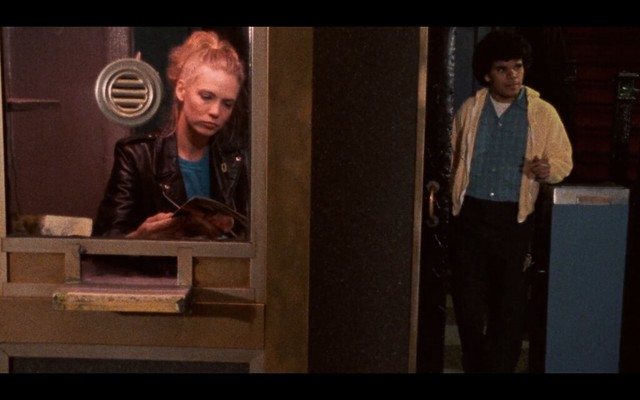

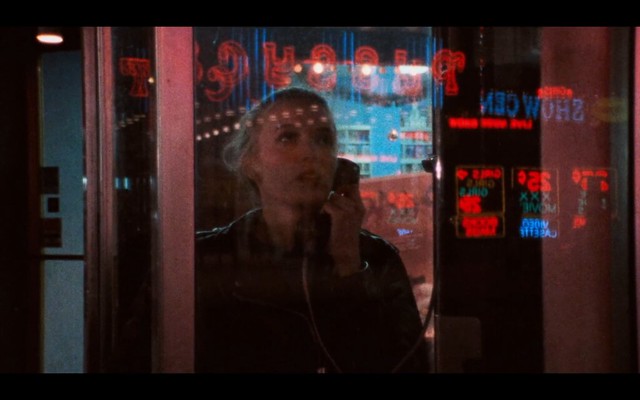
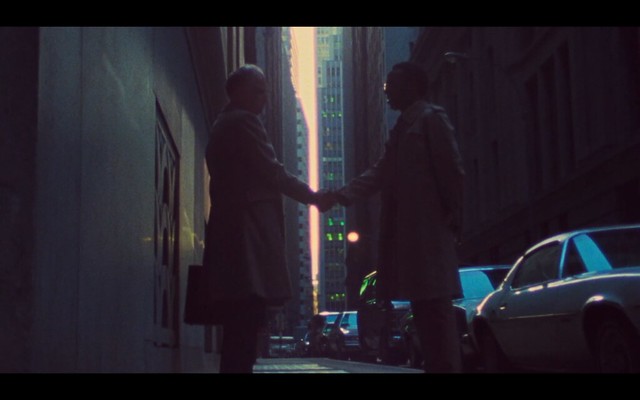


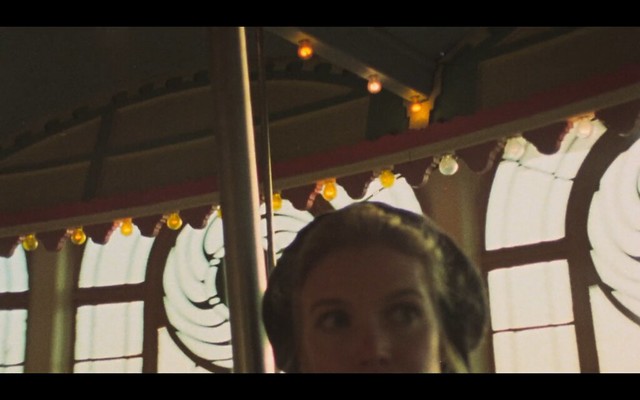


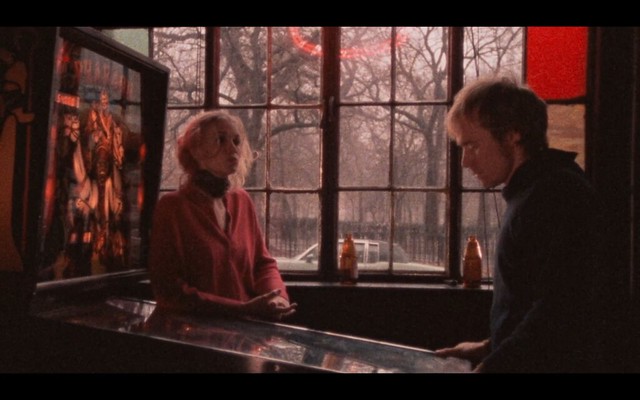 Christine (Sandy McLeod) needs a job. She's not making ends meet as an occasional journalist/reporter/writer. At her friend's suggestion, even though it might be beneath her, she takes a job as a ticket taker at Variety - a porn theater in the heart of the Red Light District in the city, near the 42nd street.
Christine (Sandy McLeod) needs a job. She's not making ends meet as an occasional journalist/reporter/writer. At her friend's suggestion, even though it might be beneath her, she takes a job as a ticket taker at Variety - a porn theater in the heart of the Red Light District in the city, near the 42nd street. 